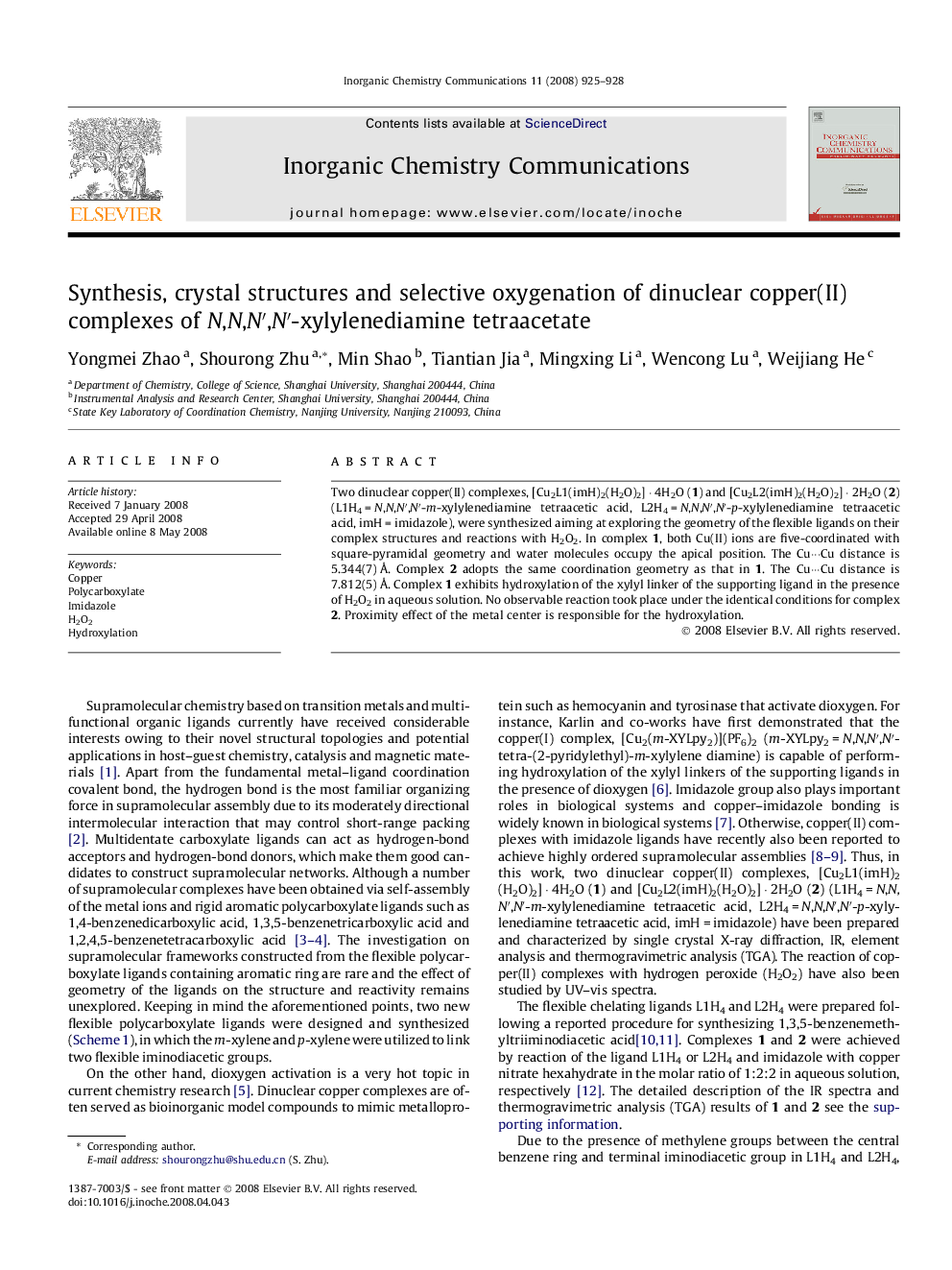| Article ID | Journal | Published Year | Pages | File Type |
|---|---|---|---|---|
| 1302440 | Inorganic Chemistry Communications | 2008 | 4 Pages |
Two dinuclear copper(II) complexes, [Cu2L1(imH)2(H2O)2] · 4H2O (1) and [Cu2L2(imH)2(H2O)2] · 2H2O (2) (L1H4 = N,N,N′,N′-m-xylylenediamine tetraacetic acid, L2H4 = N,N,N′,N′-p-xylylenediamine tetraacetic acid, imH = imidazole), were synthesized aiming at exploring the geometry of the flexible ligands on their complex structures and reactions with H2O2. In complex 1, both Cu(II) ions are five-coordinated with square-pyramidal geometry and water molecules occupy the apical position. The Cu···Cu distance is 5.344(7) Å. Complex 2 adopts the same coordination geometry as that in 1. The Cu···Cu distance is 7.812(5) Å. Complex 1 exhibits hydroxylation of the xylyl linker of the supporting ligand in the presence of H2O2 in aqueous solution. No observable reaction took place under the identical conditions for complex 2. Proximity effect of the metal center is responsible for the hydroxylation.
Graphical abstractA structural comparison of two flexible dinuclear copper complexes in which the copper(II) centers situate the meta- or para-position suggests that the regulation of the geometry of the polynuclear copper centers may lead to construction of different supramolecular architecture and the former can react with H2O2 to hydroxylate ligand due to proximity effect.Figure optionsDownload full-size imageDownload as PowerPoint slide
